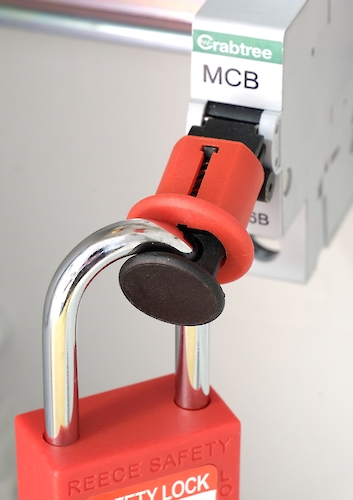Developing an effective group lockout programme
 Correctly performing a safe lockout procedure can be complex enough for one person, however when a group lockout is required it can become increasingly more complicated. It is vital that lockout tagout procedures are correctly communicated and performed with no room for error.
Correctly performing a safe lockout procedure can be complex enough for one person, however when a group lockout is required it can become increasingly more complicated. It is vital that lockout tagout procedures are correctly communicated and performed with no room for error.
In order to create a safe working environment for everyone, coordination and communication between employees is vital, particularly when more than one department is involved. The practice of group lockout/tagout techniques should afford equal protection to all involved, and as such it’s important that an effective procedure is in place.
Procedures
The lockout/tagout process can be more complex when a group of employees are completing the process together. It is in the best interests of the company to hold one authorised employee in charge of the process on each shift, usually the most qualified and experienced member of management. This person can check and report on the overseen process at the end of each shift. This employee will also have overall responsibility for the control of hazardous energy for all members of the group while the servicing or maintenance work is in progress. Success with group lockout skills starts in your written compliance program.
Group lockout procedures should be written clearly for it to become effective. This means that consistent and correct methods will be used time again; if two employees are disagreeing on the correct method on securing machinery, this means that one or both will be wrong, which is potentially life-threatening. Therefore, detailed written instructions of each stage of the lockout should be displayed for all to complete as a team with no room for error or incorrect methods being used.
Promoting teamwork
Despite being overseen, each member of staff is in control of their own energy control procedures, each stage of lockout/tagout being completed, and the efficiency at which is it completed. This way, each lockout is kept simple to complete. But even with one person in charge, it’s also critical for each trained employee who is part of the group to have good knowledge and be trained in all lockout/tagout steps.
Each employee is accounted for
In a group lockout, each employee must affix his or her personal lockout or tagout device to the group lockout device, lockbox or comparable mechanism before servicing equipment and machinery with lockout tagout equipment from Reece Safety. This means that each employee has control over his or her own protection and verify that the equipment has been properly de-energized. By completing a group lockout at the same time, this ensures that all workers know when it is not safe to re-energise equipment.



